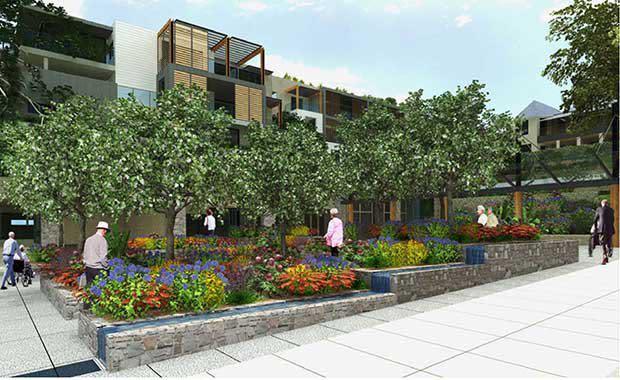Resources
Newsletter
Stay up to date and with the latest news, projects, deals and features.
Subscribe
We are all living longer, and that fact alone is having a big impact on the housing market as the population grows and ages.
However among one group, it is the baby boomers that right now are shaping many areas of the housing market. As life expectancy among the boomers continues to rise a more complex housing market is evolving.
There has been a 100 per cent increase in the numbers of people living beyond 55+ and a 150 per cent increase in the numbers of people aged 75+.
At the same time as the baby boomers age, their health has improved, and a longer life span is leading to pressures on aged welfare payments and health care costs. There are also longer-term pressures building on how superannuation savings are managed and invested and how public pensions are funded.
As a result the traditional idea of retirement and retirement housing has shifted, and continues to do so with some very dramatic consequences for the housing market, because where and how the baby boomers live in retirement looks nothing like the retirement plans and hopes of their parents.
The idea of moving to a sleepy coastal town, or traditional retirement village is being replaced with an appetite for lifestyles as diverse as living on a luxury liner (for the lucky few) or the more accessible idea of moving to a lifestyle resort with apartments and villas clustered around a golf course and access to a cinema, resort style pool and other amenities.
A key idea driving retirement living is however the desire to stay connected. As people live longer and stay in good health they want to stay connected to family, the kids, the grand kids and lifelong friends, the idea of moving away from all of these connections has no appeal.
And so those living in retirement or soon to retire are no longer heading towards accommodation in clusters, they are aging in place and that means possibly staying longer in the current family home in metro, regional and country locations.
Existing homes are being renovated in greater numbers to accommodate their needs, by for example improving access to bathroom facilities and by reorganising accommodation so that stairs are eliminated.
Of course some people do move house, either trading up or down the price ladder, and many new homes now feature a ground floor bedroom and bathroom. There’s also a continued trend towards boomers moving into CBD apartments, or apartments that a very well connected to local facilities, Sydney’s Double Bay and Bondi Junction are just two areas where this trend is evident, but it’s a wide spread trend.
It’s all a part of being connected to the community, and peoples health care is also better managed when they are close to established medical facilities, a point not wasted on Federal and State Treasurers.
More Flexibility Requires More Income
Halcyon LandingRecent Federal Budgets have started to directly address retirement issues, the retirement age is being increased, yes we are living longer, but we are also working longer by choice and by necessity.
As part of the housing equation income planning is now a central concern, people want to have more control when they retire and this is leading to a greater trend towards semi-retirement, with more lifestyle flexibility.
By moving into retirement slowly, people are able to retain the family home longer, or plan their move to say a new apartment project, in an orderly fashion and possibly over a number of years. This is often an appealing solution for those who are asset rich, but cash poor.
If people do not want to sell their homes and move to fund part of their retirement income, staying local looks to be a long-term trend. Staying connected, also means more boomers are looking for flexibility in their housing options, and moving to semi-retirement may well have the impact of delaying the possible turnover of some existing housing stock.
However it appears that it is quality of life that will drive retirement housing options and it is interesting to note that it’s the more highly paid who work longer, and those that retire early usually do so not for financial reasons, but for health reasons as their ability to work is diminished.
Somehow that retirement cottage on the beach has lost its appeal, while a CBD apartment gains appeal and boomers weigh up how best to fund their future lifestyle and housing needs.
Article by
Peter Chittenden via